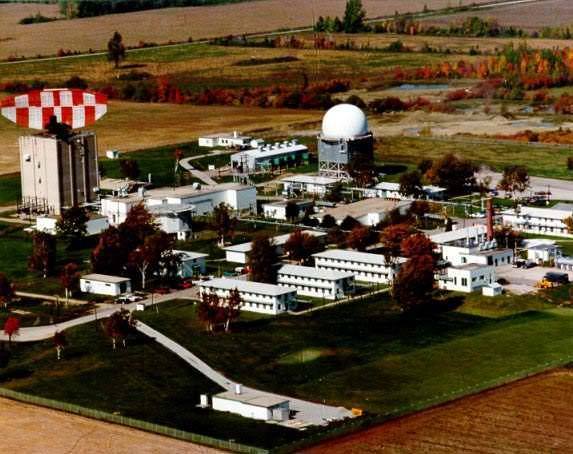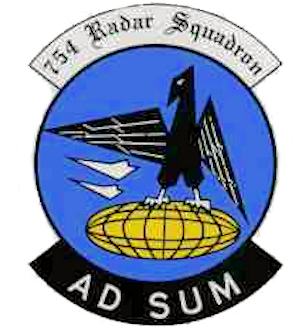
Introduction
Port Austin Air Force Station (AFS), located in Michigan, has a rich history as part of the United States Air Force's Air Defense Command network. Operational from 1951 to 1988, it played a crucial role in national defense during the Cold War era. This article delves into the origins, operations, and eventual decommissioning of Port Austin AFS, highlighting its significance in the broader context of American military history.
Origins and Establishment
In the early 1950s, as tensions between the United States and the Soviet Union escalated, the U.S. government sought to enhance its air defense capabilities. This led to the establishment of a series of radar stations across the country. Port Austin AFS was one of these installations, chosen for its strategic location on the tip of Michigan's Thumb region on Lake Huron, providing a critical vantage point for monitoring potential air threats over the Great Lakes and northeastern United States.
Construction of Port Austin AFS began in 1950, and the station officially became operational on February 1, 1951. Initially, the facility was equipped with AN/FPS-3 search radar and AN/FPS-4 height-finder radar. These early radar systems formed the backbone of the station's air defense operations, enabling it to detect and track incoming aircraft.
Role During the Cold War
Throughout the Cold War, Port Austin AFS was integral to the United States' air defense strategy. As part of the Air Defense Command's network, the station's primary mission was to provide early warning and tracking of potential Soviet bomber attacks. This role became increasingly important as the threat of nuclear warfare loomed over the nation.
In the mid-1950s, technological advancements led to significant upgrades at Port Austin AFS. The station received the more advanced AN/FPS-20 search radar, which enhanced its detection capabilities. Additionally, the introduction of the Semi-Automatic Ground Environment (SAGE) system in the late 1950s revolutionized air defense operations. SAGE, a computerized network linking radar stations and command centers, allowed for real-time data processing and more efficient interception of enemy aircraft.
Port Austin AFS became a vital node in the SAGE network, with data from its radar systems feeding into the larger air defense system. This integration improved response times and coordination with interceptor aircraft and missile systems, bolstering the nation's defensive posture.
Daily Life and Operations
Life at Port Austin AFS was a unique experience for the airmen and their families stationed there. The base functioned as a self-contained community, complete with housing, recreational facilities, and support services. Despite the remote location, the sense of camaraderie among personnel helped foster a close-knit community.
The operational tempo at Port Austin AFS was high, with radar operators working around the clock to ensure constant surveillance of the airspace. The station conducted regular training exercises and readiness drills to maintain peak operational efficiency. Using U.S. Aircraft, these exercises simulated potential Soviet air attacks, testing the station's ability to detect and respond to threats swiftly.
In addition to its primary air defense mission, Port Austin AFS also supported search and rescue operations over the Great Lakes. The station's radar systems played a crucial role in locating and assisting distressed aircraft and vessels, highlighting its versatility and importance beyond military applications.
Technological Advancements and Upgrades
The 1960s and 1970s saw continued technological advancements at Port Austin AFS. The station's radar systems underwent several upgrades to improve performance and reliability. The upgrades further solidified Port Austin AFS's role in the nation's air defense network.
During the late 1960s, the station transitioned to the AN/FPS-24 search radar, one of the most powerful radar systems of its time. The AN/FPS-24 provided extended coverage and improved target detection, ensuring that Port Austin AFS remained at the forefront of air defense technology. Additionally, the station received the AN/FPS-26 height-finder radar, enhancing its ability to accurately determine the altitude of detected aircraft.
In 1982 a bearing in the A/N FPS-24 bull gear had catastrophic failure. The antenna was pointing permanently east after the incident. In early 1983 it was replaced with an A/N FPS-91A search radar set. At the same time the A/N FPS-26 height finder radar set was replaced with an A/N FPS-116 height finder radar set. Both were operational until September 30, 1988, when the site was decommissioned.
The integration of these advanced radar systems allowed Port Austin AFS to maintain its operational effectiveness though much of the Cold War. The station's continued upgrades reflected the evolving nature of the air defense mission and the need to stay ahead of potential threats.
Decommissioning and Legacy
As the Cold War drew to a close in the late 1980s, the strategic landscape shifted, leading to a reevaluation of the nation's air defense infrastructure. Advances in satellite technology and changes in geopolitical dynamics reduced the need for extensive ground-based radar networks. Consequently, the U.S. Air Force began decommissioning many of its radar stations, including Port Austin AFS.
On September 30, 1988, Port Austin AFS officially ceased operations. The decommissioning marked the end of an era for the station and its personnel, many of whom had dedicated their careers to its mission. The site was subsequently repurposed for civilian use, with some of its facilities converted into residential and commercial properties.
Despite its closure, the legacy of Port Austin AFS endures. The station's contributions to national security during a critical period in history are remembered and celebrated. The site remains a symbol of the dedication and sacrifices made by the men and women who served there.
Conclusion
Port Austin Air Force Station played a pivotal role in the United States' air defense efforts during the Cold War. From its establishment in the early 1950s to its decommissioning in 1988, the station was at the forefront of technological advancements and operational readiness. Its history reflects the broader narrative of the nation's defense strategy and the constant vigilance required to safeguard against potential threats.
The story of Port Austin AFS is a testament to the resilience and ingenuity of the U.S. Air Force and its personnel. As we look back on the history of this remarkable installation, we are reminded of the importance of maintaining a strong and adaptable defense infrastructure in an ever-changing world.
I was stationed at Port Austin AFS MI, from 1977 through 1979 as the Chief of Administration and Personnel. Although it was a most challenging assignment with its mission and location, I have fond memories of my time there.

Colonel Charles P "Chuck” Wilson, USAF Ret., Past-Chairman of the Board- The Cold War Museum®; KC-135Q Pilot & Flight Commander; U-2 Pilot, U-2 Instructor & 2-time U-2 Squadron Commander; also, AF Group and C2 Center (became 505 C2 Wing) Commander; Pentagon Bureaucrat; State Department Diplomat; later Corporate Business Development executive; NASM DOCENT


